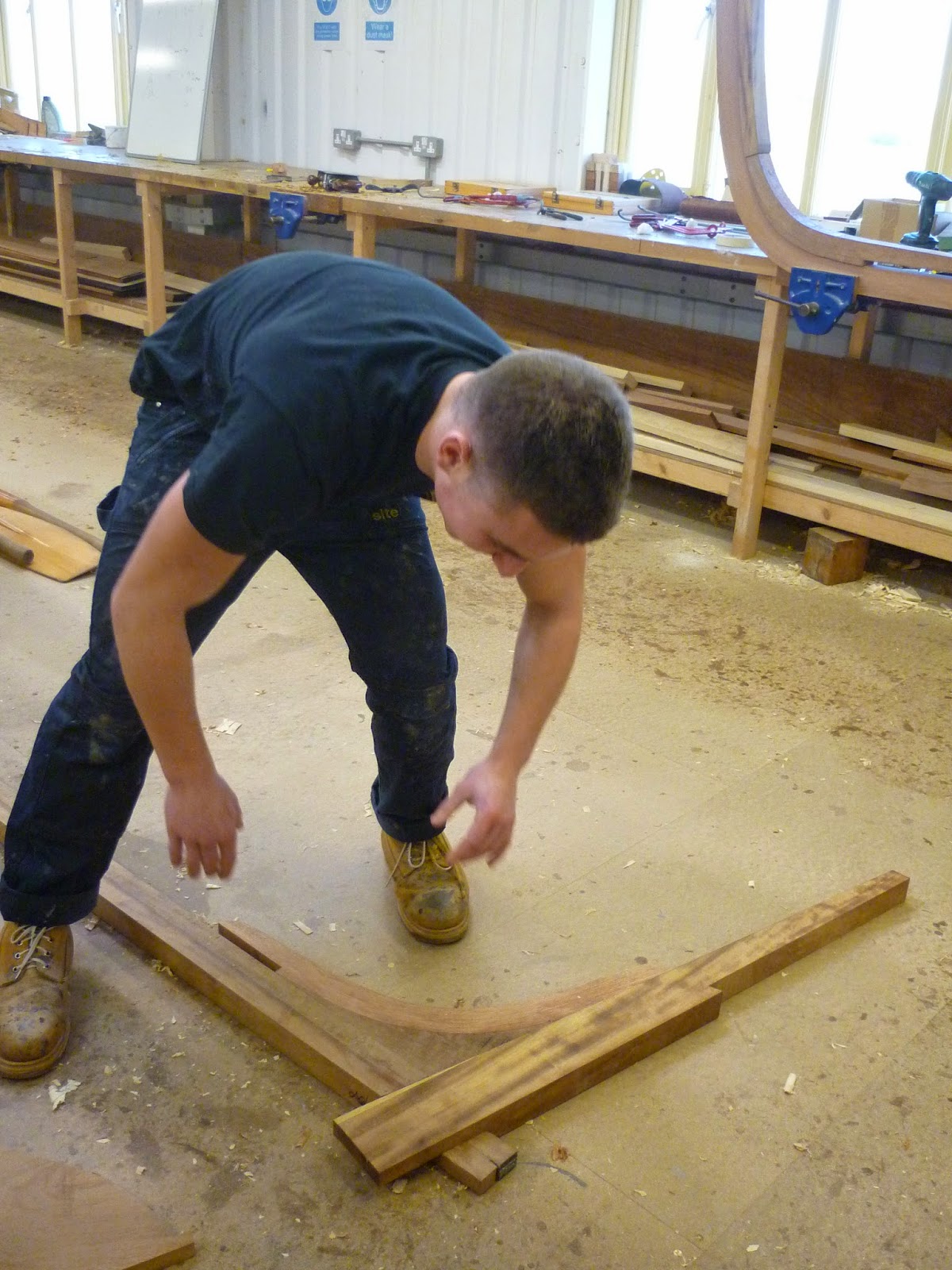As I’m sure
you can all imagine, splinters are a hazard of the job here at Pioneer. You can
don your most fashionable PPE for all the other flying objects and big bangs
but splinters are the invincible villains of the workshop.
Mick, our
wise (old) shipwright AKA Mick Allen The Great even after years of experience
was signed off work with a splinter that swelled up like a sausage not so long
ago. Although there were many rumors
 flying round the town about alligator attacks
and spider bites…to set the record straight it was indeed just a splinter. Yet
another splinter incident was when Charlie got a biggun stuck under his
fingernail, Charlie being Charlie though could not just pull it out like a
normal person…he had to drill into his fingernail to relieve the swelling
pressure, hoik it out and then parade it round the workshop while a few of us
were quietly vomiting in the corner. Oh the joys of carpentry ey.
flying round the town about alligator attacks
and spider bites…to set the record straight it was indeed just a splinter. Yet
another splinter incident was when Charlie got a biggun stuck under his
fingernail, Charlie being Charlie though could not just pull it out like a
normal person…he had to drill into his fingernail to relieve the swelling
pressure, hoik it out and then parade it round the workshop while a few of us
were quietly vomiting in the corner. Oh the joys of carpentry ey.
Luckily for
us we now have Ben The Big Friendly Giant. His mum is a nurse and he is famous
for being a little bit anal about cleanliness in the yard. He even showers
twice a day! With all this in mind we put our heads together, used our
initiative and set up Bens Splinter Removal Surgery. It probably wouldn’t pass
any Health and Safety checks but hey the yard has saved a lot of money on
plasters since (needless to say this blog is probably the first The Management
have heard of it)! Now when the time
comes we know where to go. He also offers a finger removal service for serious
cases although Aidan is the only one to have this service to use so far.
 I had an
appointment with Dr Ben last week, all suited and booted with his mask, latex
gloves and his biggest Sorby chisel (bearing some resemblance to a medieval
torture set up) I walked up to him and put my hand on his custom made extra
tall bench. Turning away, wincing, cursing and stamping my tiny steel toe caps
on the floor Dr Ben got to work. “Abbey, I haven’t even started yet…have a can
of man the **** up”. Either way it was a total overreaction, it didn’t hurt at
all although it did give Charlie a reason to mock me for a few days. With his
steady hand, finely sharpened chisels and a few antiseptic wipes he had it out
in no time! With puss oozing from my humongous wound a bit of masking tape and
tissue was applied and I continued building our famous rowing gigs. Dr Ben
saves the day again!
I had an
appointment with Dr Ben last week, all suited and booted with his mask, latex
gloves and his biggest Sorby chisel (bearing some resemblance to a medieval
torture set up) I walked up to him and put my hand on his custom made extra
tall bench. Turning away, wincing, cursing and stamping my tiny steel toe caps
on the floor Dr Ben got to work. “Abbey, I haven’t even started yet…have a can
of man the **** up”. Either way it was a total overreaction, it didn’t hurt at
all although it did give Charlie a reason to mock me for a few days. With his
steady hand, finely sharpened chisels and a few antiseptic wipes he had it out
in no time! With puss oozing from my humongous wound a bit of masking tape and
tissue was applied and I continued building our famous rowing gigs. Dr Ben
saves the day again! 



















